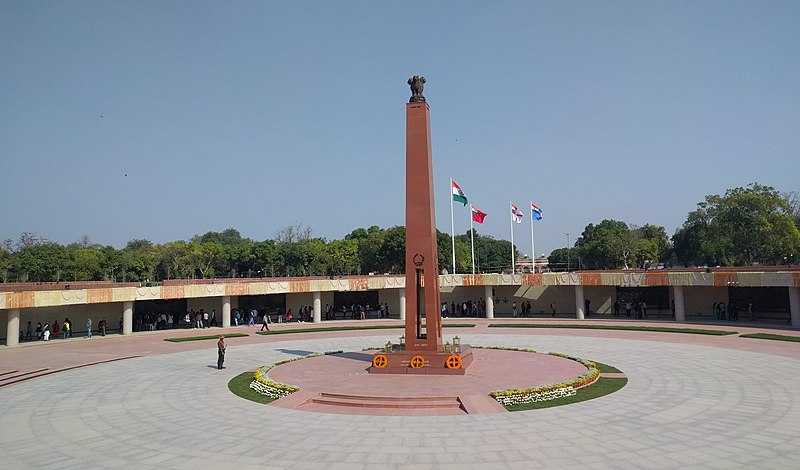National War Memorial
Weather :
Tags : Monument
Timings : 9:00 AM - 6:30 PM (November to March) and 9:00 AM - 7:30 PM (April to October)
Time Required : 1 - 2 hrs
Entry Fee : No Entry Fee
National War Memorial, Delhi Overview
Situated near the India Gate in Delhi, the National War Memorial was built to commemorate the Armed Forces of the country. Known to be the latest edition in the list of monuments in the National Capital region, the memorial was very recently inaugurated by the honourable Prime Minister of India - Shri Narendra Modi on the 25th of February, 2019. Sprawling over a gigantic 40 acres of land area, the memorial is constructed around the existing chhatris (canopy) and is in complete sync and harmony with the aesthetics of the area.
The walls of the National War Memorial are inscribed with the names of the great martyrs and fearless heroes of the country that include the martyrs during 1947–48, 1961 (Goa), 1962 (China), 1965, 1971, 1987 (Siachen), 1987-88 (Sri Lanka), 1999 (Kargil), and other operations such as Operation Rakshak etc. The area adjoining the memorial is called the Princess Park and there is a proposal to build a National War Museum in the area. The two will be connected through an underground tunnel or a subway.
Read More on National War Memorial
Architecture and Design of the National War Memorial
- Amar Chakra - The Amar Chakra, meaning the Circle of Immortality is the innermost circle which also houses the obelisk. The obelisk is a sturdy sky touching tower that is 15.5 metres high and is visible from far and wide. This is also the place which has the eternal flame to pay homage to the national heroes.

Source - Veerta Chakra - Veerta Chakra, meaning the Circle of Bravery, is the first concentric circle surrounding the obelisk. It has six bronze murals which weigh around 600 to 1000 kgs. They depict different battle actions.
- Tyag Chakra - Tyag Chakra, meaning the Circle of Sacrifice, is the second concentric circle around the obelisk. It is entirely made of granite bricks and is carved with the names of the fallen soldiers. It has a total of 24942 names of national heroes, their regiments and ranks.
- Rakshak Chakra - Rakshak Chakra, meaning the Circle of Protection, is the last circle in queue. It has been lined by around 600 trees that are a metaphor for the soldiers who protected all of us in exchange for their lives.
Interesting Trivia about the National War Memorial
- National War Memorial was built on a sunken ground at a whopping cost of INR 176 crores. The designer and the architect for the same was chosen carefully through a global competition which was won by Mumbai based sP+a Studios for design for the Museum and Chennai based WeBe Design Lab’s design for the memorial.
- The flame at the obelisk in the War Memorial is similar to that of the India Gate. It represents that the sacrifice of the soldiers will always be immortal.
- The complex has a total of 16 walls which follow the pattern of a Chakravyuh- ancient Indian war formation.
- The four chakras around the eternal flame called Amar, Tyag, Veerta and Rakshak signify Immortality, Sacrifice, Bravery and Protection.
Best Time to Visit
How to Reach
Top Hotel Collections
Top Hotels Near National War Memorial
National War Memorial Reviews

Have a Question on National War Memorial?

experience.